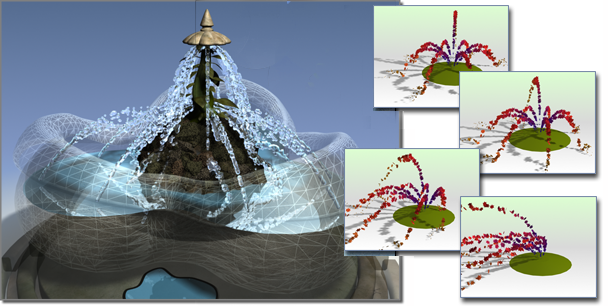Particle systems are useful for a variety of animation tasks. Primarily, they're employed when animating a large number of small objects using procedural methods; for instance, creating a snowstorm, a stream of water, or an explosion.
3ds Max provides two different types of particle systems: event-driven and non-event-driven. The event-driven particle system, Particle Flow, tests particle properties, and, based on the test results, sends them to different events. Each event assigns various attributes and behaviors to the particles while they're in the event. In the non-event-driven systems, particles typically exhibit consistent properties throughout the animation.

Left: Fountain spray created as a particle system
Insets on right: Wind space warp changes the direction of fountain spray
Which Particle System to Use?
Having access to a wealth of particle systems in 3ds Max leads to the need to decide which system to use for a particular application. In general, for a simple animation, such as falling snow or a water fountain, setup is faster and easier with a non-event-driven particle system. With more complex animations, such as an explosion that generates different types of particles over time (for example: fragments, fire, and smoke), use Particle Flow for greatest flexibility and control.